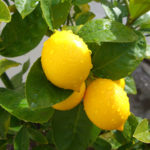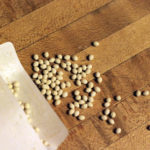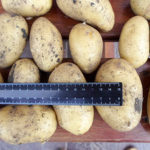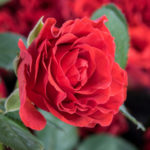Hydrangea paniculata Silver dollar
Without exception, all flower growers want to settle in their garden more decorative, but at the same time unpretentious plants that are resistant to all sorts of negative environmental factors. There are many such crops among hydrangeas. Take note of the many virtues Silver Dollar variety.
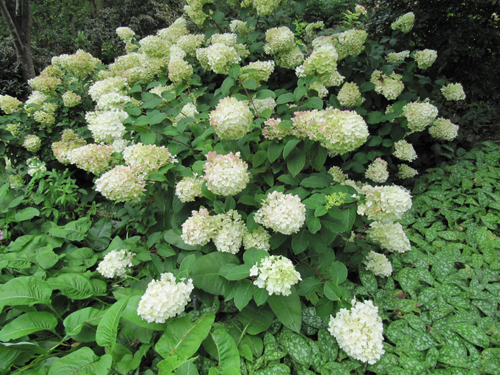
Description
The specified culture belongs to panicle hydrangeas. It looks like a powerful perennial shrub under 2 meters in height with a crown coverage of the same diameter. The plant has straight, strong shoots covered with dark brown bark and oblong, pointed leaves of a dark green hue, equipped with jagged edges. The crown of the Silver dollar is symmetrical, rounded. This variety, like other types of hydrangea, is famous for its inflorescences. In this case, they are large, at first airy and light, later - dense, with a characteristic cone-shaped top. The shape of the flower "candles" is wide-pyramidal. Each Silver dollar inflorescence consists of many sterile, snow-white flowers, which, being buds, delight the eye with a delicate greenish tone. By September, they acquire a pinkish color or a pale lilac hue. The flowering culture lasts from mid-summer to October. Despite the impressive size, the inflorescences do not create a special load on the shoots, and they remain directed vertically upward during the entire flowering period. Thus, the shrub does not need support, and its stems do not need tying.
The variety has a high cold resistance. Frosts down to -34 ° C are incapable of harming him. Hydrangea is very resistant to pests and various diseases.
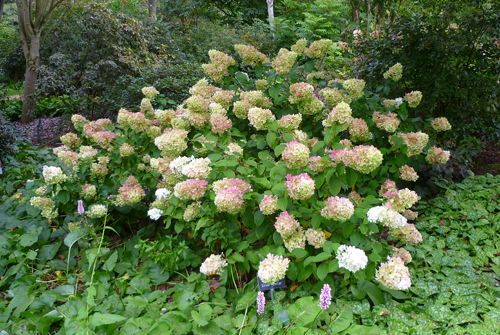
Features of agricultural technology
Silver dollar feels comfortable where there is enough sunlight. The flower is calm about the heat, but at midday in the summer it should still be in partial shade, for which they use shading from white agrospan. The shrub must be protected from strong winds by planting it near buildings or fences.
The soil for the plant should be selected light, with a high level of fertility, with an acidic or slightly acidic reaction. The ideal soil for hydrangea is black soil and loam. Limestone substrate and sandy soil are completely unsuitable for her. Stick to this composition of the soil mixture: 2 parts of humus, 2 parts of leafy soil, 1 part of sand, 1 part of peat. Recommended planting pit depth: 0.3-0.5 meters. At the bottom of the hole, a layer of drainage material is required. After planting, during which the root collar is left above the ground, the plant is watered, and the soil around it is mulched with sawdust.
Caring for the Silver dollar consists of regular watering, top dressing and pruning. The soil under the flower is moistened with settled, slightly warm and in no case chlorinated water. Each adult Silver Dollar bush should receive several buckets of water at a time. Watering frequency: 1 time in 3 days.
The soil under the crop needs to be fertilized monthly, or even more often. In April, the first feeding is carried out using an organic fertilizer enriched with nitrogen (for example, urea or slurry). At the end of spring, it is time to add a mineral concentrate containing a lot of potassium to the soil. Alternatively, use a specialized store fertilizer for hydrangeas. At the stage of bud development and the appearance of inflorescences, the plant requires phosphorus-potassium fertilizer (superphosphate). This top dressing is repeated at the beginning of autumn.
Pruning is shown to the plant as a flowering stimulant and to maintain a decorative appearance.In the spring, formative pruning of the shrub is carried out: the old branches are shortened, but they do not touch the last year's ones, since it is on them that Silver Dollar has inflorescences. Dead, damaged, diseased shoots are removed, waiting for the appearance of the first leaves or before the start of sap flow. In summer, the bush is thinned out, removing the shoots growing inside the crown. Anti-aging pruning will not be superfluous for the Silver dollar. In the fall, the stems are pruned in order to prepare the shrub for winter. Old inflorescences are also removed. After that, the culture is covered with straw or hay, a wire frame is erected above it, which is covered with a film on top. You can also use spruce branches as a shelter.
Silver dollar is propagated by three methods: layering, cuttings and dividing the bush. The first two methods are the simplest. The division of the bush is advisable to use for relatively adult specimens of hydrangea, which are rather large in size and have a too dense crown.
Since the plant's resistance to fungal diseases and pests is high, prophylactic treatment with fungicidal and insecticidal preparations is not necessary. However, it is still better to do it if the summer in your area is too humid and cool, because such weather increases the risk of the above-mentioned troubles.
Use cases
The Silver dollar variety has become widespread in landscape design. Experts who own this art place it in group plantings. An ornamental shrub is combined with small flowering perennials with buds of about the same color as the flowers of our heroine. Combinations can be created where hydrangea is adjacent, on the contrary, with taller plants. An incomparable effect is achieved by planting a crop next to coniferous and evergreen tree species. Shrubs of this variety, placed along the perimeter of the facade of the house or on the sides of garden paths, look interesting. Silver dollar can also be grown on a trunk. The presence of strong shoots allows the culture to keep its shape and withstand the weight of the inflorescences during the entire period of lush flowering. The height of the trunk should be about 0.6 meters. In general, there are a lot of options - choose any to your taste!
